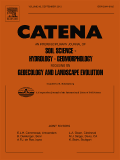
CATENA
Scope & Guideline
Uncovering Groundbreaking Insights in Geosciences
Introduction
Aims and Scopes
- Soil Erosion and Conservation:
Research on the mechanisms, rates, and impacts of soil erosion, including the effectiveness of various conservation practices to mitigate soil loss. - Soil-Plant Interactions:
Studies examining how vegetation influences soil properties, stability, and nutrient cycling, particularly in relation to land use changes and restoration efforts. - Hydrological Processes:
Investigations into the interactions between soil properties, water movement, and hydrological responses to rainfall, including modeling and field studies. - Soil Carbon Dynamics:
Research on soil organic carbon storage, turnover, and the effects of various agricultural practices on carbon sequestration and greenhouse gas emissions. - Climate Change Impacts:
Studies evaluating the effects of climate variability and change on soil health, erosion processes, and agricultural productivity. - Geomorphology and Land Use Change:
Research on how landforms and geological factors influence soil formation, erosion, and sediment transport, particularly in the context of human activities. - Soil Quality Assessment:
Development of indicators and methodologies for assessing soil quality, health, and functionality in various ecosystems.
Trending and Emerging
- Climate Change Adaptation:
Research on how soils and ecosystems can adapt to changing climatic conditions, including studies on resilience, restoration, and sustainable management practices. - Soil Microbial Ecology:
A significant increase in studies focusing on soil microbial communities, their diversity, functional roles, and responses to environmental changes, highlighting their importance in soil health and nutrient cycling. - Use of Advanced Technologies:
The application of remote sensing, machine learning, and geospatial analysis in soil studies is on the rise, facilitating improved mapping, monitoring, and predictive modeling of soil properties and erosion. - Ecosystem Services Valuation:
Growing emphasis on assessing and valuing ecosystem services provided by soils, particularly in the context of land use changes and environmental sustainability. - Integrated Land Management Practices:
Research exploring integrated approaches to land management that combine agricultural practices with ecological considerations to enhance soil health and productivity. - Restoration Ecology:
An increase in studies focused on the restoration of degraded landscapes, particularly in arid and semi-arid regions, emphasizing the role of soil health in ecosystem recovery.
Declining or Waning
- Traditional Soil Classification:
Research on conventional soil classification systems has waned as newer, more dynamic approaches to soil mapping and classification are developed, focusing on functional and ecological aspects rather than static categorizations. - Single-Factor Studies:
There has been a noticeable decline in studies that focus on isolated soil properties without considering broader ecological interactions, as interdisciplinary approaches gain prominence. - Historical Soil Studies:
Research solely focused on historical soil conditions and classifications is decreasing, with a shift towards understanding contemporary impacts and future projections in soil science. - Localized Case Studies:
The trend has moved away from isolated, localized studies towards broader, multi-site comparative analyses that provide more generalizable results.
Similar Journals

REVISTA BRASILEIRA DE CIENCIA DO SOLO
Cultivating Knowledge for Tomorrow's Soil ChallengesREVISTA BRASILEIRA DE CIENCIA DO SOLO, published by the SOC BRASILEIRA DE CIENCIA DO SOLO, serves as a vital open-access platform for disseminating impactful research in the fields of Agronomy and Soil Science. With an ISSN of 0100-0683 and an E-ISSN of 1806-9657, this journal has been fostering academic dialogue since 2003 and has gained recognition as a Q2 journal in both Agronomy and Soil Science as of 2023. Based in Brazil and actively supporting scientists and practitioners globally, it is uniquely positioned to address the challenges and innovations in soil management and cultivation practices. The journal's Scopus rankings reflect its commitment to quality, standing at #164/406 in Agronomy and Crop Science and #74/159 in Soil Science, placing it in the top quartile of its category. Researchers, professionals, and students are encouraged to contribute their findings and insights, making it a significant resource for anyone interested in advancing the science of soil and crop stewardship.
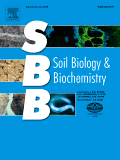
SOIL BIOLOGY & BIOCHEMISTRY
Advancing the Science of Soil LifeSOIL BIOLOGY & BIOCHEMISTRY, published by Pergamon-Elsevier Science Ltd, is a premier academic journal that plays a pivotal role in advancing the fields of microbiology and soil science. Established in 1969, this esteemed journal has gained recognition for its rigorous publication standards and impactful research contributions, evidenced by its prestigious Q1 rankings in both Microbiology and Soil Science categories for 2023. With an impressive Scopus rank of #3 among 159 in Agricultural and Biological Sciences and #14 among 182 in Immunology and Microbiology, it boasts a notable 98th percentile in its field. The journal offers researchers, professionals, and students a vital platform for sharing innovative studies and insights about soil ecosystems and their biochemical processes, fostering greater understanding and collaboration within the scientific community. While Open Access options are currently not available, the journal remains a cornerstone for those seeking to deepen their knowledge and contribute significantly to soil biology and biochemistry.
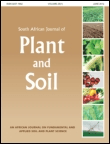
South African Journal of Plant and Soil
Pioneering insights into plant and soil management.South African Journal of Plant and Soil is an esteemed academic publication dedicated to advancing the fields of Ecology, Plant Science, and Soil Science. Published by TAYLOR & FRANCIS LTD in the United Kingdom, this journal has been a vital resource since its inception in 1984, providing a platform for innovative research and scholarly articles that address critical issues in plant and soil management. With a current impact factor placing it in the Q3 category according to the 2023 rankings, it occupies an influential position within the academic community, especially amongst researchers focused on agricultural and environmental sciences. Although not an open-access journal, it remains accessible to a broad audience through libraries and institutions that recognize its value in facilitating ecologically and environmentally focused discussions. The journal's ongoing commitment to publishing high-quality research ensures that it plays a pivotal role in nurturing knowledge and fostering advancements in sustainable practices across southern Africa and beyond.
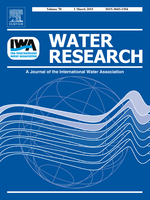
WATER RESEARCH
Driving impactful discoveries in water science since 1967.WATER RESEARCH, published by Pergamon-Elsevier Science Ltd, is a premier international journal dedicated to the advancement of knowledge in the interdisciplinary field of water science and technology. With a significant impact factor, WATER RESEARCH holds a distinguished position, consistently ranking in the top quartile (Q1) across multiple categories including Civil and Structural Engineering, Environmental Engineering, and Pollution. Established in 1967 and set to continue its legacy until at least 2024, this journal provides a vital platform for researchers and professionals to disseminate cutting-edge findings related to water sustainability, quality, and management. Although the journal follows a traditional access model, its commitment to disseminating impactful research ensures that it remains an essential resource for academia and industry alike. With a rigorous selection process, the journal includes articles that significantly contribute to the understanding and resolution of global water-related challenges, making it an invaluable asset for researchers, students, and practitioners engaged in this critical area of study.
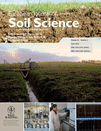
EUROPEAN JOURNAL OF SOIL SCIENCE
Leading the Way in Soil Science Research and InnovationEUROPEAN JOURNAL OF SOIL SCIENCE, published by Wiley, stands as a leading platform in the field of soil science, recognized for its contributions to the understanding of soil ecology, management, and sustainability. With an impressive impact factor and a distinguished Q1 ranking in Soil Science, this journal has recently ranked 23rd out of 159 in its category on Scopus, placing it in the 85th percentile among its peers. Covering a wide array of topics as it converges into the future, from 1994 to 2024, the journal aims to disseminate groundbreaking research and innovative methodologies that address the pressing challenges of soil degradation and environmental sustainability in Europe and beyond. Although it is not an open access journal, the EUROPEAN JOURNAL OF SOIL SCIENCE remains a vital resource for researchers, professionals, and students seeking to deepen their understanding and explore the latest advancements in soil science.

Carpathian Journal of Earth and Environmental Sciences
Innovating Insights into Earth’s Dynamic ChangesCarpathian Journal of Earth and Environmental Sciences is a distinguished academic journal dedicated to advancing the interdisciplinary field of Earth and environmental sciences. Published by the Carpathian Association for Environment and Earth Sciences, this journal plays a pivotal role in disseminating high-quality research focused on the dynamic interactions between geological processes and environmental changes. With an ISSN of 1842-4090 and an E-ISSN of 1844-489X, the journal is indexed in Scopus and holds an esteemed Q3 quartile ranking in both Earth and Planetary Sciences and Environmental Science categories as of 2023. Since its inception in 2008, the Carpathian Journal has provided an open access platform for researchers, professionals, and students to share insights, foster collaboration, and engage in critical discussions on pressing environmental issues. By continuously contributing to the body of knowledge in this field, the journal not only enhances academic discourse but also promotes sustainable environmental practices across Romania and beyond.

EGYPTIAN JOURNAL OF SOIL SCIENCE
Transforming Soil Science in the Heart of EgyptEGYPTIAN JOURNAL OF SOIL SCIENCE is a renowned publication dedicated to advancing the field of soil science, particularly within the context of Egypt and the broader regions of the Middle East and North Africa. Published by the NATIONAL INFORMATION DOCUMENTATION CENTER, ACADEMIC SCIENTIFIC RESEARCH & TECHNOLOGY, this journal aims to disseminate high-quality research and innovative practices related to soil management, conservation, and sustainable agricultural practices. With an emphasis on empirical studies, reviews, and methodologies relevant to soil health and productivity, this journal serves as an essential resource for researchers, professionals, and students alike. Although specific access options are not highlighted, the journal’s commitment to promoting scholarly discourse ensures that important findings within soil science are made available to wider audiences, contributing significantly to environmental science, agronomy, and ecological preservation.
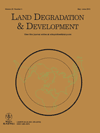
LAND DEGRADATION & DEVELOPMENT
Empowering communities through impactful research.LAND DEGRADATION & DEVELOPMENT is a premier academic journal published by WILEY that has been at the forefront of research on the critical issues surrounding land degradation since its inception in 1989. With an impressive impact factor and ranked in the Q1 category across multiple fields including Development, Environmental Chemistry, Environmental Science, and Soil Science, this journal serves as an essential resource for scholars and professionals dedicated to sustainable land management and environmental conservation. Although it currently does not provide open access, its rigorous peer-review process ensures the publication of high-quality, impactful research that addresses vital environmental challenges. The journal aims to foster interdisciplinary collaboration, promote innovative solutions, and disseminate knowledge that not only informs policy but also empowers communities to combat land degradation effectively. Researchers, professionals, and students alike will find the insights and findings published in LAND DEGRADATION & DEVELOPMENT invaluable for advancing their understanding and practices within this critical field.

CANADIAN JOURNAL OF SOIL SCIENCE
Connecting Research to Real-World Soil SolutionsThe Canadian Journal of Soil Science (ISSN: 0008-4271, E-ISSN: 1918-1841) is a premier publication in the field of soil science, proudly published by Canadian Science Publishing. Established in 1974, this esteemed journal aims to promote high-quality research and insights into the dynamic interactions within soil ecosystems, addressing pressing issues such as soil health, management, and sustainability. With an impressive 2023 category quartile ranking of Q2 in Soil Science and a Scopus ranking placing it in the 52nd percentile, this journal stands out as a key resource for researchers, professionals, and students alike. Although currently not open access, the journal provides valuable content that contributes to advancing the understanding of soil science, an essential discipline for agricultural innovation and environmental stewardship. As we approach its converged years through 2024, the Canadian Journal of Soil Science is poised to continue its pivotal role in disseminating impactful research and fostering a community dedicated to soil science excellence.

Soil Systems
Innovating Soil Research for Global SustainabilitySoil Systems, published by MDPI, is a premier open access journal dedicated to advancing the understanding of soil science and earth-surface processes. Launched in 2017, this journal has quickly established itself with a strong presence in the academic community, holding a prestigious Q1 ranking in both Earth-Surface Processes and Soil Science as of 2023. With an impressive Scopus rank in the top 20% of its categories, Soil Systems is an essential platform for disseminating groundbreaking research addressing the challenges and complexities of soil management, its ecological significance, and its role in sustainable development. The journal operates under an open access model since 2018, ensuring maximum visibility and accessibility for researchers, professionals, and students alike. Based in Switzerland, at ST ALBAN-ANLAGE 66, CH-4052 BASEL, Soil Systems encourages contributions that promote interdisciplinary collaboration, innovative methodologies, and the application of findings to real-world issues related to soil health and environmental sustainability.